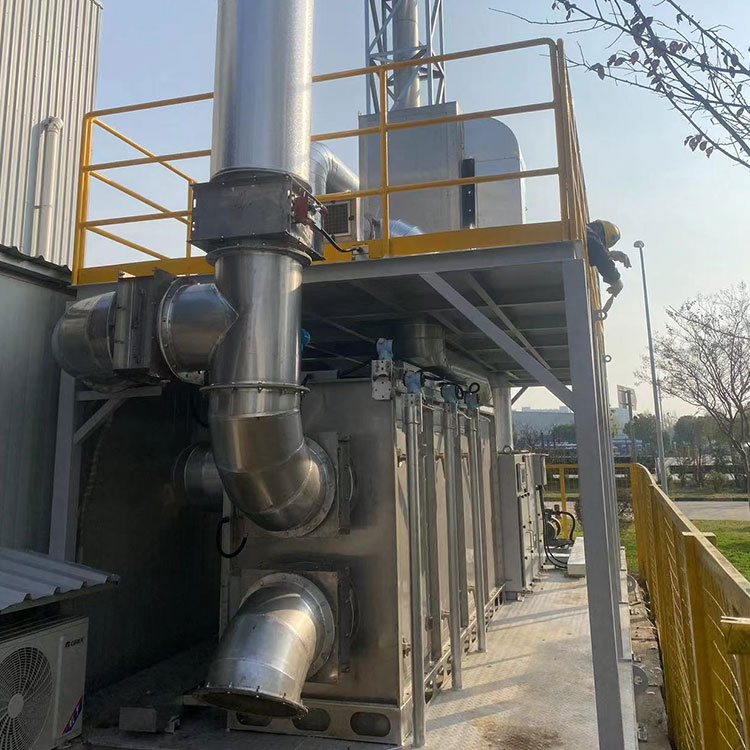What Is Catalytic Combustion Equipment and How Does It Benefit Industrial Processes?
2024-12-13
In today’s industrial landscape, efficiency and environmental sustainability are more important than ever. As industries strive to reduce emissions and improve operational efficiency, catalytic combustion equipment has become a vital tool. But what exactly is catalytic combustion equipment, and how does it benefit industrial processes?
This blog explores the technology behind catalytic combustion, its applications, and the advantages it offers to industries seeking to optimize their energy use while minimizing environmental impact.
What Is Catalytic Combustion Equipment?
Catalytic combustion equipment refers to specialized devices that use a catalyst to accelerate the chemical reaction involved in combustion, typically in industrial heating systems, exhaust treatment units, or energy generation processes. The catalyst facilitates the oxidation of fuels at lower temperatures compared to conventional combustion methods, making the process more efficient and less polluting.
The core concept behind catalytic combustion is that it lowers the activation energy needed for combustion to occur, allowing for a cleaner, more efficient burning of fuels. This type of combustion typically uses a catalyst (often made from platinum or palladium) that helps break down the fuel and oxidize it with oxygen more effectively. By achieving combustion at lower temperatures, the equipment reduces the formation of harmful emissions such as nitrogen oxides (NOx) and carbon monoxide (CO).
How Does Catalytic Combustion Work?
In a catalytic combustion system, the fuel is mixed with air and passed over a catalyst material. This process accelerates the reaction, enabling combustion to occur at a much lower temperature than traditional methods would require. As a result, the amount of energy needed to ignite and burn the fuel is significantly reduced.
The catalyst does not get consumed in the reaction, meaning it remains active for long periods, allowing for consistent and efficient operation. Over time, however, the catalyst may require cleaning or replacement due to the buildup of impurities or wear.
Applications of Catalytic Combustion Equipment
Catalytic combustion equipment has diverse applications across several industries, thanks to its energy efficiency and environmental benefits. Here are some key sectors where catalytic combustion technology plays a significant role:
1. Industrial Heating Systems
Many industries use catalytic combustion equipment in industrial furnaces or boilers for heat generation. By using a catalyst, these systems can burn fuels more efficiently, leading to lower fuel consumption and reduced emissions. Catalytic combustion equipment helps businesses meet stringent environmental regulations while ensuring that their heating systems operate efficiently.
2. Exhaust Gas Treatment
In the automotive and industrial sectors, catalytic combustion is often employed in exhaust treatment systems. For example, in gas turbines or internal combustion engines, catalytic combustors help reduce harmful pollutants before they are released into the atmosphere. This technology plays a crucial role in improving air quality by cutting down on the emission of toxic gases like carbon monoxide and unburned hydrocarbons.
3. Energy Generation
Catalytic combustion is increasingly being used in power generation to improve efficiency and reduce the environmental footprint of energy production. In this context, catalytic combustors are integrated into combined heat and power (CHP) systems, which simultaneously generate electricity and heat for industrial applications. By lowering combustion temperatures, these systems are more fuel-efficient and produce fewer greenhouse gases.
4. Waste Incineration
Waste management is another area where catalytic combustion is proving beneficial. Catalytic combustion equipment is often used in waste incineration plants, helping to break down hazardous materials at lower temperatures and reduce harmful emissions. By enhancing combustion efficiency, industries involved in waste processing can operate more sustainably and comply with environmental regulations.
Benefits of Catalytic Combustion Equipment
The growing interest in catalytic combustion equipment can be attributed to its numerous benefits, both in terms of operational efficiency and environmental impact.
1. Reduced Emissions
One of the biggest advantages of catalytic combustion is its ability to lower harmful emissions. Traditional combustion processes can produce high levels of nitrogen oxides (NOx), carbon monoxide (CO), and particulate matter, all of which contribute to air pollution. By enabling combustion at lower temperatures, catalytic systems reduce the formation of these pollutants, leading to cleaner air and better compliance with environmental standards.
2. Increased Energy Efficiency
Catalytic combustion helps industries achieve higher energy efficiency by burning fuels more completely and at lower temperatures. This means less fuel is needed to produce the same amount of heat or power, resulting in cost savings and a reduction in energy consumption.
3. Lower Operating Costs
By improving fuel efficiency and reducing maintenance needs (due to lower combustion temperatures), catalytic combustion systems can lower overall operating costs. For example, since the catalyst is not consumed in the process, it lasts longer and requires less frequent replacement, saving businesses on maintenance and replacement costs.
4. Compact and Flexible Design
Catalytic combustion equipment is often more compact than traditional combustion systems, making it suitable for applications where space is limited. Its flexibility in operation and lower temperature requirements make it adaptable for a range of industries, from chemical manufacturing to automotive and energy production.
5. Environmental Compliance
As environmental regulations become stricter, businesses must find ways to reduce their carbon footprint. Catalytic combustion helps industries meet these regulations by lowering emissions of harmful gases and ensuring compliance with emission standards. This is especially important for companies aiming to improve sustainability and reduce their environmental impact.
Challenges and Considerations
While catalytic combustion technology offers several advantages, there are also challenges to consider. For instance, the initial cost of installing catalytic combustion equipment can be higher than traditional combustion systems, although the long-term savings in fuel consumption and reduced emissions may offset this initial investment.
Additionally, the catalyst itself can degrade over time, especially in environments with high levels of impurities in the fuel or exhaust gases. Regular maintenance and monitoring are necessary to ensure the system operates optimally.
Conclusion
Catalytic combustion equipment represents a significant advancement in combustion technology, offering industries a way to reduce emissions, improve energy efficiency, and lower operating costs. By enabling combustion at lower temperatures, this technology contributes to cleaner air, greater operational sustainability, and compliance with environmental regulations.
Whether used in industrial heating, exhaust treatment, energy generation, or waste management, catalytic combustion plays an essential role in modernizing industrial processes for a cleaner, more efficient future. As industries continue to focus on sustainability, the importance of catalytic combustion equipment is only set to grow.



